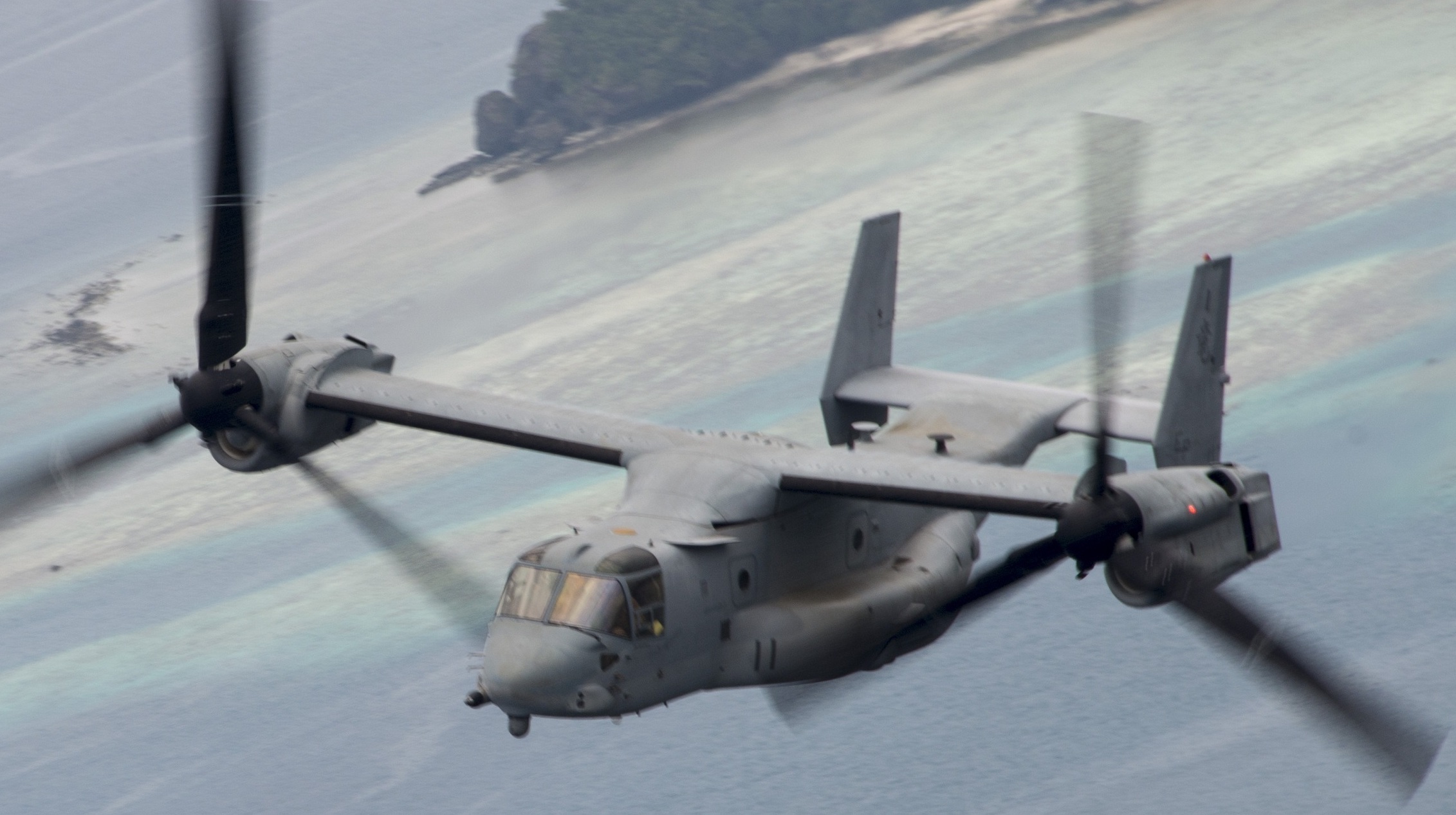

The Marines, Air Force and Navy will begin flying the V-22 Osprey again in the coming weeks without a major fix to the $90 million tilt-rotor airplane. The Marines own close to 340 Ospreys, the Air Force about 50 and the Navy 27. The Naval Air System Command announced the end of a three-month military-wide safety stand down Friday morning, and all three services said the planes will be flying within weeks if not days.
However, they’ll take to the skies with no physical changes or new parts, despite Pentagon officials insisting they have identified a “material failure” within the Osprey’s engines that caused at least one of three fatal crashes in 18 months prior to the December 2023.
In two of those cases that killed a total of 13 flyers, officials have confirmed that the planes suffered a catastrophic mechanical failure that gave the pilots no chance of recovery or survival.
“We are not making a hardware change to the aircraft,” said Marine Col. Brian Taylor, the V-22 Program Manager for NAVAIR, which oversees all Osprey flight rules and regulations for all three services. “Instead we’re changing some inspection intervals and changing some other kind of maintenance and procedural limits that we have on the aircraft that address this particular issue. This is essentially the same aircraft that was flying on December 5th, but it’s also pretty much the same aircraft that’s flown 750,000 hours.”
A November 2023 crash of an Air Force special operations Osprey killed eight crewmembers in Japan. Officials say a “material failure” aboard the aircraft brought the Osprey down, but have not confirmed what that failure was.
Those clues follow the same pattern as the final findings behind a 2022 crash of a Marine MV-22 that killed five. An investigation found that a key part of the plane’s transmission system failed, suffering what investigators called a “hard clutch engagement,” or HDC. HDC failures had been recorded on at least 15 other Osprey flights, some of which resulted in hard landings or crahes but none of which ended in fatalities.
Osprey engineers with the military and Bell/Boeing have sought a fix for HDC failures since at least 2017, but have yet to solve the issue with new parts, instead changing maintenance procedures and repair schedules for the plane.
A third Osprey crash in Australia in the summer of 2023 killed three crewmembers, though close to 20 Marines on board the plane survived. The Marines said this week that the cause of that crash is still under investigation.
The latest on Task & Purpose
- Sailors at Norfolk will be locked out of their rooms if they fail inspection
- Army Reserve colonel allegedly pocketed $62,000 in fake rental property scheme
- Army quietly dropped 5-mile run requirement from airborne school in 2018
- Alaska paratroopers get a secret weapon for the arctic: beards
- Army will add 17 air defense units while cutting 24,000 active duty spots